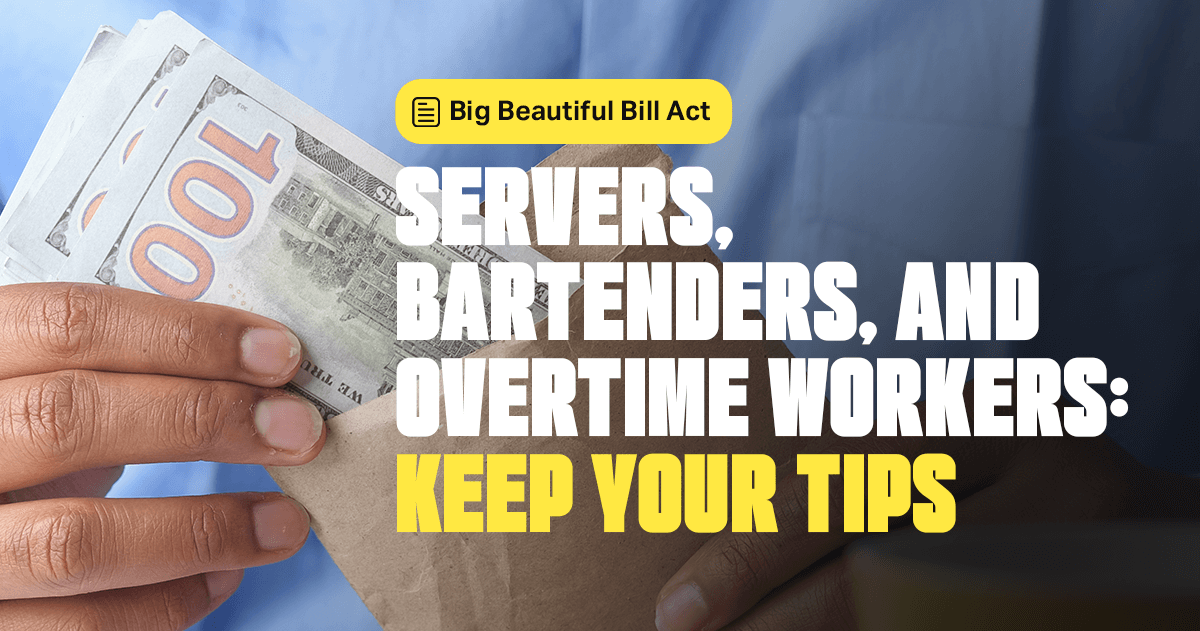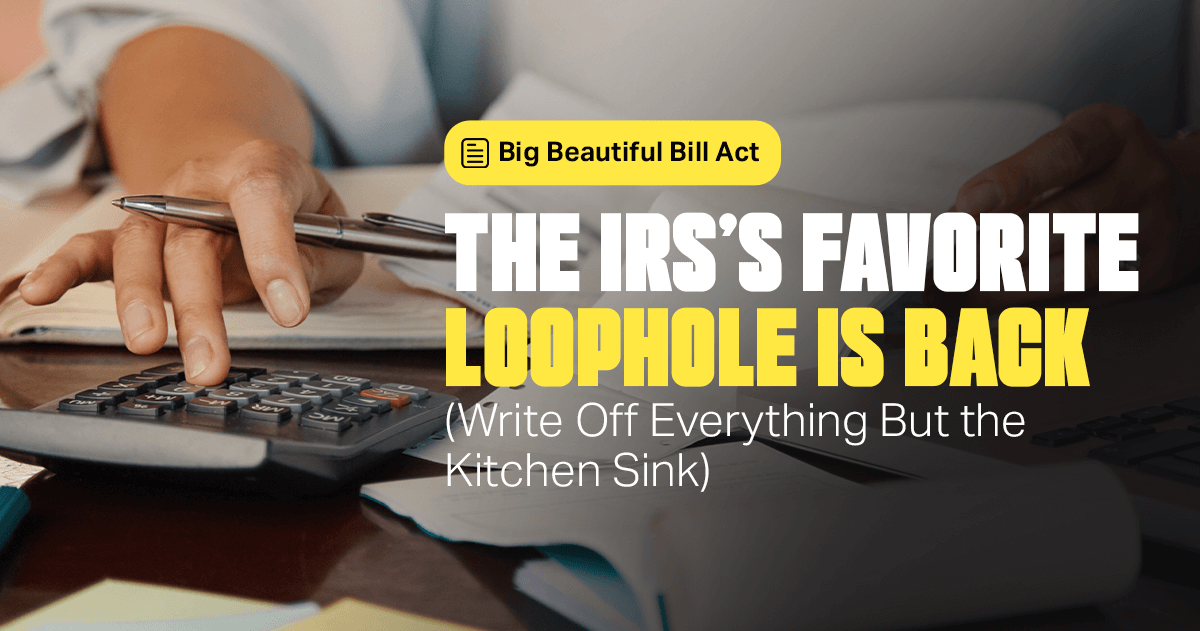Here’s something that’ll make every New Yorker, Californian, and New Jersey resident want to throw a party: Uncle Sam just quadrupled the amount you can deduct for state and local taxes.
I’ll never forget this conversation I had with my accountant back in 2018. I’m sitting there going through my taxes, and he drops this bomb on me: “Andrew, you can only deduct $10,000 in state and local taxes this year. Everything above that, you just eat.”
I said, “What do you mean I can only deduct $10,000? I paid $35,000 in state income taxes and property taxes last year.”
“Yeah, well, Congress decided that people in high-tax states were getting too much of a break. So they capped it.”
“Let me get this straight. I’m paying taxes to my state, then I’m paying taxes to the federal government on money I already gave to my state?”
“Welcome to double taxation.”
I didn’t grow up on the right side of money, but even I could see that getting taxed twice on the same income was some grade-A bullshit.
And for seven years, people in high-tax states have been getting hammered by this $10,000 cap while folks in no-tax states laughed all the way to the bank.
But Trump’s Big Beautiful Bill just said “screw that noise” and raised the SALT (State and Local Tax) deduction cap to $40,000. That’s right—you can now deduct up to $40,000 in state income taxes, local income taxes, and property taxes combined.
Let’s be honest—if you live in California, New York, New Jersey, Connecticut, or any other state where the government treats your wallet like their personal ATM, this is the best news you’ve heard in years.
Here’s how this works, and I’m going to explain it like you’re my neighbor, not some tax attorney who charges $500 an hour to explain basic math:
The SALT deduction lets you deduct what you pay in state and local taxes from your federal taxable income. So if you paid $30,000 in state income taxes and $15,000 in property taxes, that’s $45,000 total. Under the old cap, you could only deduct $10,000 of that. Under the new rules, you can deduct $40,000.
But—and there’s always a but—there are income limits. If you make more than $500,000 as a single filer or $1 million filing jointly, the deduction starts to phase out. Because apparently, the government thinks if you’re making that much money, you don’t need help dealing with double taxation.
How many of you have been getting absolutely crushed by state taxes while the federal government acts like those payments don’t exist? How many of you have thought about moving to Florida or Texas just to escape the tax hell of high-cost states?
You see what I mean? This isn’t just about saving money on taxes—this is about basic fairness. Why should someone in California pay higher effective federal tax rates than someone in Texas just because their state government is more expensive?
Think of it like this: Let’s say you make $200,000 and you live in a state with high income taxes. You might pay $15,000 to your state and another $8,000 in property taxes. That’s $23,000 in state and local taxes. Under the old cap, you could only deduct $10,000 of that on your federal return, meaning you were paying federal taxes on $13,000 that you never actually received. Under the new rules, you can deduct the full $23,000.
The math ain’t mathin’ if you’re living in a high-tax state and not maximizing your SALT deduction.
But here’s what pisses me off—this increase is only temporary. It runs through 2029, then drops back to $10,000 unless Congress acts. So you’ve got a five-year window to take advantage of this, and then who knows what happens.
My buddy lives in Westchester County, New York. Good guy, successful business owner, but he’s been getting destroyed by the combination of New York state taxes, local taxes, and property taxes on his house. Last year, he paid over $50,000 in state and local taxes but could only deduct $10,000. This year? He can deduct $40,000 of that, which saves him about $10,000 in federal taxes.
That’s real money—money he can reinvest in his business, put toward his kids’ college funds, or just keep as a reward for not fleeing to a no-tax state.
This isn’t just about money, though. This is about keeping successful people in high-tax states instead of forcing them to flee to places with better tax climates. When entrepreneurs and business owners leave California and New York for Florida and Texas, those states lose jobs, lose tax revenue, and lose the economic energy that comes from having successful people in your community.
I’m not doing this for applause, but I’ve seen what happens when tax policy drives away the people who create jobs and drive economic growth. States start circling the drain, and the people who can’t afford to leave get stuck holding the bag.
Money is a game, but the SALT deduction cap was like forcing some players to play with their hands tied behind their backs.
You earn income, you pay what you owe to your state, you deduct what the law allows, and you multiply what matters most—your ability to build wealth without getting double-taxed into poverty.
So here’s my challenge: If you live in a high-tax state, stop accepting whatever tax bill your accountant calculates without question. Make sure you’re maximizing your SALT deduction, and start planning for what happens when this benefit potentially expires in 2029.
The shoebox mentality says “pay whatever taxes they calculate and hope for the best.” The maximized SALT deduction mentality says “deduct every dollar you’re legally entitled to deduct.”
Which taxpayer are you going to be?




















